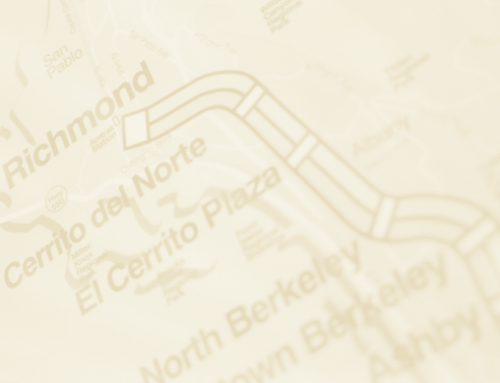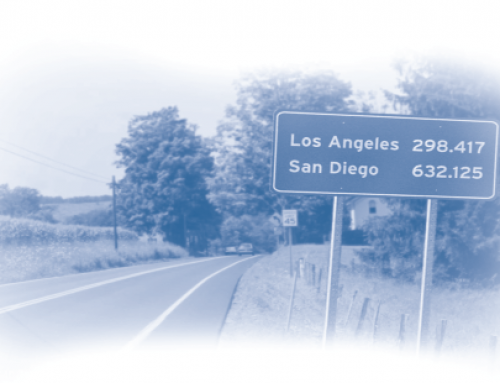[sharelines]The key to reform is to introduce more accountability into the infrastructure delivery system.
Among the peculiarities of American governments is their tacit belief that infrastructure never dies. A capital project, they assume, needs only its initial investment. Once built, there’s no need for anything like a depreciation account or a maintenance budget. Later, if a shortage of capital funds prevents replacement or even long-deferred maintenance, the facilities just wear out or rust away. As a consequence, major infrastructure across America is falling into decay. In regions facing rapid growth, future prospects for sustaining modern standards in transportation, schools, hospitals, water supplies, waste disposal, parks, museums, and the like are mighty dim.
My observations are based on a recent review of conditions and procedures in California, where things look pretty bad. However, I suspect that California is not exceptional among the states and that the comments in the following pages are pertinent across the nation. In the end, if we’re to maintain the standards of living we’re capable of, state and local governments are going to have to make some drastic changes in the ways they plan and provide basic infrastructure—indeed, in the ways they govern.
Toward Strategic Planning
Their first step is to recognize that everything really is connected to everything else. Common planning practice is fundamentally flawed, because it treats each public-service sector as though it were an independent domain. For example, we’ve all learned in recent years that transportation and land use are but sides of the same coin, hence that we must plan transportation facilities as functions of a city’s spatial arrangements, and vice-versa. And yet, even though modern traffic-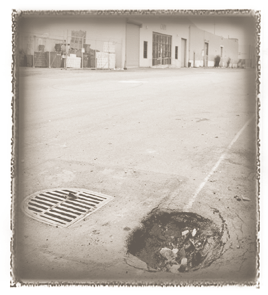 generation models recognize those relations, state DOTs continue to function independently of land use agencies, each going its own way and pursuing its own ends, each following its own preferences and its own profession’s interests. It should be obvious to us all that school facilities must be fitted to residential settlement patterns and their demographics; but the school board follows its own compass. Similar relations mark water supply and agriculture; sewerage and housing; airports, rail lines, and freeways; taxes and everything. Above all, the patterns of specialized vested interest and political influence and the established habits of public officials are primary determinants of what gets built and where—not systematic projections of demand for public services. If we’re to become effective planners for public infrastructure and services, we’ll have to learn to think strategically. We’ll need to conduct our analyses across the various sectors, simultaneously. And we’ll need to encompass the political considerations that technically oriented engineers and planners have long thought were outside their realms, even though politics, rather than technics, determine which infrastructure gets built. But first I want to describe some deficiencies in our present governmental systems and suggest some more technical remedies.
generation models recognize those relations, state DOTs continue to function independently of land use agencies, each going its own way and pursuing its own ends, each following its own preferences and its own profession’s interests. It should be obvious to us all that school facilities must be fitted to residential settlement patterns and their demographics; but the school board follows its own compass. Similar relations mark water supply and agriculture; sewerage and housing; airports, rail lines, and freeways; taxes and everything. Above all, the patterns of specialized vested interest and political influence and the established habits of public officials are primary determinants of what gets built and where—not systematic projections of demand for public services. If we’re to become effective planners for public infrastructure and services, we’ll have to learn to think strategically. We’ll need to conduct our analyses across the various sectors, simultaneously. And we’ll need to encompass the political considerations that technically oriented engineers and planners have long thought were outside their realms, even though politics, rather than technics, determine which infrastructure gets built. But first I want to describe some deficiencies in our present governmental systems and suggest some more technical remedies.
The Missing Strategic Mindset
California, like most states, has developed sector plans that seek to specify future supply for various services. Some of those plans were derived with help from sophisticated simulation models and employed the insight and wisdom of professionals and legislators. And yet, few if any reflect the dynamic developmental processes that arise as interdependent sectors constantly interact with each other. As with complex ecologic systems in nature, economic and social systems comprise extremely intricate and interdependent relations, such that events in any one sector are constantly being reshaped by events in others. Thus, for example, developments in California’s water systems inevitably affect electric-power production, agriculture, the region’s fisheries, the location of urban development, the character of industrial development, and so on, possibly including the climate. In turn, developments in each of these sectors are reflected as changing demand for water and for each of the related sectors. Similar interdependencies affect all other parts of the system.
 It’s all too true that the sciences are not yet sufficiently developed to permit description of the whole state ecology, much less permit us to simulate its processes. And yet we are not wholly ignorant. We know a lot about the causal chains through which individual sectors affect each other. The trouble is we don’t know how to organize ourselves so we can exploit our understandings. We don’t know how to get the various departments in state government to work together, much less how to get the various industrial and civic groups to collaborate. We don’t even know how to build simulation models to describe these relationships.
It’s all too true that the sciences are not yet sufficiently developed to permit description of the whole state ecology, much less permit us to simulate its processes. And yet we are not wholly ignorant. We know a lot about the causal chains through which individual sectors affect each other. The trouble is we don’t know how to organize ourselves so we can exploit our understandings. We don’t know how to get the various departments in state government to work together, much less how to get the various industrial and civic groups to collaborate. We don’t even know how to build simulation models to describe these relationships.
Moreover, we’ve not explored alternative ways of delivering services, such as through public-private collaborations— privately financed research facilities on public university campuses, or jointly owned and operated public facilities—like the new San Jose State University/City of San Jose Library. We have not identified noncapital alternatives for meeting future demand such as year-round education, telecommuting, and advanced forms of water and energy conservation, nor have we experimented adequately with demand-side modes of planning. Traditional supply-side planning made sense when the various sectors were small and still immature, when state growth rates were rapid, and when there was broad consensus in support of growth. But today’s environment is changed. Many citizens reject economic and population growth and decry suburban development. Infrastructure planning is politicized, based largely on pork-barrel deal making. Traditional types of capital funds are in short supply, and the various bureaucracies are actively competing to corner what’s available.
The Missing Vision for Infrastructure Investment Planning
Several states are actively searching to overcome these difficulties by trying to invent ways of doing long-term, multisectoral strategic planning. Notable among them are Florida, Maryland, and New Jersey—but not yet California. Each has formulated a vision of the state’s future economy, 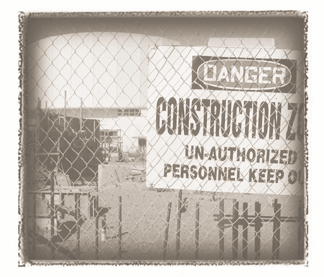 its living conditions, and its environment. Each, in turn, is seeking to understand how it might intervene in regional developmental dynamics and thus raise the odds of achieving desirable future conditions.
its living conditions, and its environment. Each, in turn, is seeking to understand how it might intervene in regional developmental dynamics and thus raise the odds of achieving desirable future conditions.
In place of straight-line extrapolation of the curves tracing past levels of supply, their strategies call for deliberately shaping future demand. The trick is to invent demand-management policies—policies that influence consumers’ choice of activities and hence their demand for services. In California the most active demand-management programs are those of the Department of Water Resources, which is seeking to promote water conservation by differentially pricing water supplies. There are some signs that demand management is slowly moving into agriculture, but there seems to be little interest elsewhere. Until recently neither K–12 nor higher education has embraced demand management as a policy option. But now, the legislature is pressing the University of California to consider year-round operation as a demand-management tool to squeeze more capacity out of its capital infrastructure. So far, however, there’s little interest in using pricing as a means of shortening students’ time to receive their degrees and thus getting better use of the infrastructure (the University of North Carolina system is a notable exception).
It seems that the most effective way to affect demand is by pricing the services. And yet, despite considerable research into pricing highways to relieve congestion—and despite the successes of congestion pricing on SR 91 and I-15 in Southern California and bridges and tunnels in New York—state transportation planners seem frightened of the concept. I find the lack of interest in demand management rather perplexing, given California’s tremendous success with demand management in the energy sector. There alone, consumers saved $7 billion over the past two decades when deliberately designed incentives, including higher prices, encouraged them to reduce their demand for commercialized power.
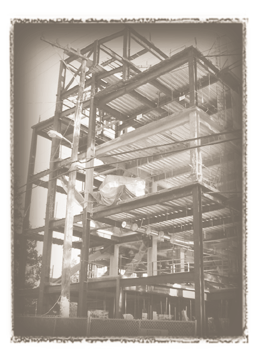 Some infrastructure is financed through user fees or charges, of course. However, inflation-adjusted fees for education and highways have not kept pace with the costs of services. Fees for California higher education have fallen by nearly twenty percent since 1994, gasoline taxes by fifty percent between 1950 and 1998. Efforts to raise highway user fees have been rebuffed for over seven years by both Republican and Democratic governors.
Some infrastructure is financed through user fees or charges, of course. However, inflation-adjusted fees for education and highways have not kept pace with the costs of services. Fees for California higher education have fallen by nearly twenty percent since 1994, gasoline taxes by fifty percent between 1950 and 1998. Efforts to raise highway user fees have been rebuffed for over seven years by both Republican and Democratic governors.
In response, construction of new highways and maintenance and renewal have severely lagged behind trends in vehicle-miles traveled. Clearly transportation improvements require a more stable and reliable financial base. But, equally important, they require a more effective system of planning and contracting. Caltrans, for example, has been reluctant to partner with the private sector. Unlike other state departments of transportation, it has refused to contract out planning, design, and management work, with the result that its projects take from 7 to 23 years to complete.
It is also essential to deal more emphatically with maintenance. A recent report ranked California’s road condition at 48th in the nation. I find that most surprising in light of the state’s reputation as a world leader in highway developments. But that study found fifty percent of the roads in poor or mediocre condition. It estimates that potholes, ruts, and rough pavements are costing the average driver some $350 per year in added maintenance and operating expenses. This totals to $7.4 billion per year for the state as a whole. And yet, despite rising VMT and increased maintenance, maintenance expenditure per 100 vehicle miles traveled declined from eleven cents in 1987 to seven cents in 1996 in constant dollars.
What Should the State Do?
A series of mutually reinforcing steps seems appropriate and necessary.
- Formulate a coherent vision for the future of the state’s economy, demography, life styles and life qualities, urbanization patterns, social and physical environments, patterns of governance, and civic Then create a capacity inside state government for thinking and acting strategically, i.e., for exploring long-term future options and alternative means of acting in pursuit of those options. A vision should guide the many policies and programs for creating future infrastructure and public services.
- Install demand-management methods that will sensitize infrastructure plans to consumers’ preferences and create incentives that can help shape consumer This innovation will create quasi-market arrangements in public sectors comparable to those in private sectors. Prices will surely be among the more powerful instruments for managing demand, matching newly supplied infrastructure to users’ preferences and potential benefits, and fitting fees to actual costs. Exceptional care must of course be taken to ensure that fees reflect ability to pay and that adjustments do not limit access of low- and moderate-income households to services. This calls for a range of offsets—lifeline rates, financial aids, tax rebates.
- Make capital funding more predictable by developing demand-based long-term investment plans linking annual tariffs and appropriations to future capital costs. Governments must move beyond the current pork-barrel method of allocating funds for capital investment; that habit causes erratic financial flows and makes for nonrational decisions that divert monies from good civic projects to self-serving ones.
- Introduce accountability measures to expose winners and losers in the investment game, to permit appraisal of each agency’s performance, and to improve project But accountability alone will not assure improved service. In addition, strong incentives are needed to reward high-level performance, promote competition among public agencies and between public and private agencies, and thus, in turn, help to improve performance of the public service systems. Infrastructure planning, development, and management need to be depolitized by shifting financial responsibility for services to the user and beneficiary, and at the same time developing ability-to-pay offsets for low- and moderate-income households. If users and beneficiaries start to finance infrastructure directly, they will demand more accountability and transparency in infrastructure service delivery. Taking the pork out of infrastructure financing requires that users and beneficiaries exert more control over infrastructure planning, investment, and management decisions. No citizens will tolerate pork-barrel planning if they clearly recognize that they are paying for someone else’s pork.Wishful thinking? Perhaps, but consider the success of the Santa Clara County Traffic Authority. Frustrated with traffic congestion and Caltrans inaction, citizens of the county approved a sales taxes increase to finance the formation of the Authority. The SCCTA was able to build needed highway improvements in one-third of the time proposed by Caltrans and in the process saved over $100 million. The key to success was active local control of the project and partnership with a private engineering firm to implement the project aggressively.
- Introduce lifecycle costing and management to go beyond procurement costs and encumber future maintenance expenses in the project’s initial Governments need to hold their agencies accountable for maintaining capital facilities. At a minimum this requires much better reporting of facility conditions. Agencies should be required to report deferred maintenance backlogs and develop five-year plans for eliminating deferred maintenance. Recent changes in government accounting standards require state and local governments to estimate the condition and value of their capital assets annually. This should provide the impetus for governments to consider lifecycle costs.
Where to Start?
The California Legislature has already taken the first step, requiring the Governor to submit a five-year capital plan that will chart a future course of action. I suggest the plan be divided into three phases: (a) immediate steps to relieve the most severe congestion and infrastructure shortfalls; (b) near-term efforts to alleviate the next series of poor conditions; and (c) long-term overhaul to remove structural and institutional impediments to improving infrastructure. What might these look like?
Immediate actions—demand management and pricing.
These will have the quickest effects, creating new capacity within weeks or months without capital outlays. Where traffic congestion is most costly, congestion-pricing pilot projects can help. In the Bay Area, for example, experiments with higher peak-hour tolls should be tried on the bridges for a one-year trial, preferably with discounted commuter fares on the transit systems. The state’s gasoline taxes should be raised, perhaps by as much as twenty percent per year over the next five years. Local government could help by levying parking excise taxes on municipal and private parking services. Similar responses should simultaneously be mandated for schools, water supplies, waste treatment, recreational facilities, and so on across the full array of governmentally supplied services.
Hopelessly optimistic? Consider that thirty years ago, water rates were based on decreasing block charges (the more you consumed, the less you paid per unit). Now, to promote conservation and demand management, residential and industrial rates are almost universally based on increasing block tariffs.
Medium-term actions— institutional and financial restructuring.
Over the next five years the state should restructure its infrastructure institutions and establish closer links between strategic and capital planning. Funding-allocation systems for education, transportation, and other sectors need to be made more equitable and more efficient.
Toward those ends, they might experiment with dedicated full funding for maintenance, with programming capital outlay grants to sectors based on projected demand, and with balancing pay-as-you-go and debt financing to improve the predictability of infrastructure financing. With the adoption of AB 1473, the state is already moving in this direction.
Long-term actions—creating a vision and integrating policies for multisectoral infrastructure.
Th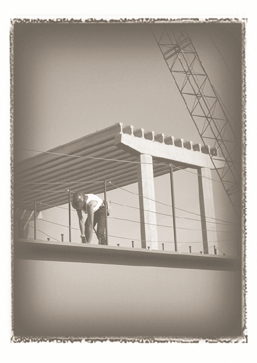 e state should formulate a vision for future economic and environmental developments over the next ten to twenty years. A broadly focused vision might sensitize the state’s various departments to likely effects of their own projects on the domains of other departments. Mutual concern for others’ domains should help to promote interdepartmental cooperation and intersectoral planning. Were the technical agencies of government equipped to collaborate, especially to collaborate with financial agencies, the odds of achieving elements of the long-term vision would surely be enhanced. Perhaps then the processes of governance would be nudged away from pork-barrel modes of deciding and investing.
e state should formulate a vision for future economic and environmental developments over the next ten to twenty years. A broadly focused vision might sensitize the state’s various departments to likely effects of their own projects on the domains of other departments. Mutual concern for others’ domains should help to promote interdepartmental cooperation and intersectoral planning. Were the technical agencies of government equipped to collaborate, especially to collaborate with financial agencies, the odds of achieving elements of the long-term vision would surely be enhanced. Perhaps then the processes of governance would be nudged away from pork-barrel modes of deciding and investing.
Although what I am proposing may sound Pollyannaish, these changes could be successfully implemented over the next five to ten years if we begin gradually to devolve responsibility for infrastructure to users, beneficiaries, and local governments, and to place more of the financing burden on users and local governments. The key to reform is to introduce more accountability into the infrastructure delivery system.
Further Reading
David E. Dowall and Jan Whittington. Making Room for the Future: Rebuilding California’s Infrastructure. San Francisco: Public Policy Institute of California. Forthcoming.
David E. Dowall, “Rethinking Statewide Infrastructure Policies: Lessons from California and Beyond,” Public Works Management and Policy, July, 2001.
David E. Dowall, California’s Infrastructure Policy for the 21st Century: Issues and Opportunities. San Francisco: Public Policy Institute of California. March, 2000.


